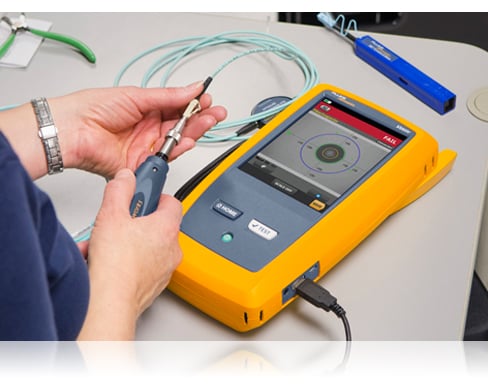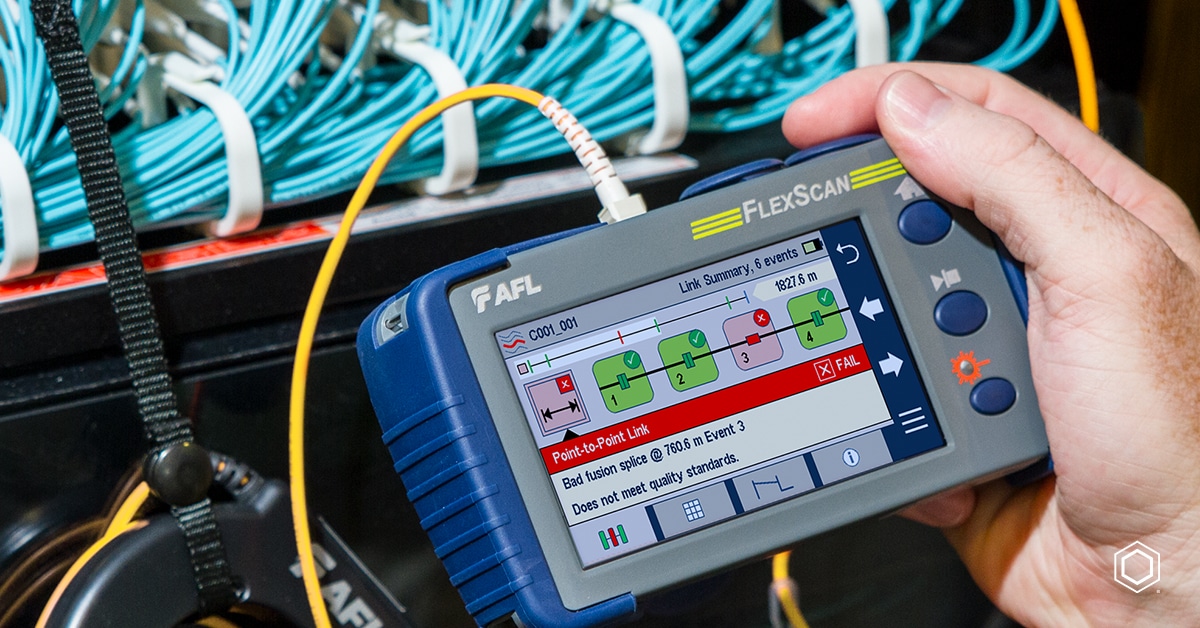Innovative robotic vision systems enhance automation and precision.
Discover the Importance of Optical Fiber Screening in Modern Telecom
In the realm of modern telecoms, the value of optical fibre testing can not be overemphasized, as it offers as the backbone for making sure network dependability and performance. What are the specific benefits that routine testing deals, and just how might it shape the future landscape of telecommunications?

Recognizing Optical Fibre Testing
Optical fiber screening is an important process in telecommunications that makes certain the stability and performance of fiber optic networks. This screening encompasses a variety of procedures designed to evaluate the physical and functional qualities of optical fibres - ofda. Trick specifications analyzed consist of optical power loss, data transfer ability, and mistake place, which are crucial for maintaining high-quality communication web links
The testing procedure normally entails making use of specialized devices such as Optical Time-Domain Reflectometers (OTDR) and Optical Power Meters. OTDRs are utilized to identify and define mistakes, entwines, and adapters within the fiber, while power meters measure the transmitted light signal toughness to identify performance.
In addition, screening is performed at different stages, consisting of during installation, upkeep, and troubleshooting, to make sure that the network fulfills industry requirements and functional requirements. Compliance with criteria set by organizations like the International Telecommunication Union (ITU) and the Telecoms Sector Organization (TIA) is extremely important.
Benefits of Normal Testing
Regular testing of optical fibres yields various benefits that substantially boost network reliability and performance. One of the main advantages is the very early discovery of potential issues, such as breaks or deterioration in the fibre, which can bring about costly downtime if left unaddressed (optical fibre diameter analyser). By identifying these problems proactively, telecommunications carriers can decrease service disruptions and guarantee constant connectivity for their clients
Furthermore, regular screening helps to preserve the honesty of signal top quality. As optical fibers age, their efficiency can be influenced by variables such as ecological problems and physical stress and anxiety. Regular analyses permit the surveillance of signal loss and total transmission efficiency, making certain that the network runs at optimum levels.
An additional significant benefit is conformity with industry standards. Normal testing sustains adherence to regulatory needs, consequently reducing lawful and financial threats related to non-compliance. It improves the general life expectancy of the fibre infrastructure by facilitating timely upkeep and fixings.

Usual Testing Methods
Examining optical fibres employs various approaches to ensure the integrity and performance of telecoms networks. Amongst the most typical strategies is Optical Time Domain Name Reflectometry (OTDR), which analyzes the entire length of the fibre by sending a pulse of light and determining the reflections caused by blemishes or breaks. This method offers comprehensive info about the area and extent of mistakes.
An additional widespread approach is using i loved this Optical Power Meters, which determine the amount of light transferred through the fiber. This strategy aids determine the loss of signal strength, making sure that it meets industry criteria. Additionally, Visual Fault Locators (VFL) are utilized to recognize breaks or severe bends in the fiber by predicting a visible laser light into the wire.
Insertion loss testing is also essential, as it evaluates the loss of signal power arising from connections and entwines within the network. Additionally, the usage of Polarization Mode Diffusion (PMD) testing evaluates the impact of fiber qualities on signal stability.
Each of these approaches plays an essential duty in keeping the efficiency and reliability of optical fiber networks, inevitably contributing to smooth telecommunications procedures.
Effect On Network Efficiency
The honesty and performance of optical fiber networks straight influence total network performance. In modern telecoms, the efficiency of information transmission depends greatly on the high quality of the optical fibres made use of. Any type of destruction in the fiber's condition-- whether because of physical damages, YOURURL.com contamination, or extreme bending-- can cause increased attenuation and signal loss, significantly impacting data integrity and speed.
Normal optical fibre screening is crucial to recognize and correct possible problems before they manifest as network failures or stagnations. Techniques such as Optical Time Domain Reflectometry (OTDR) and insertion loss testing enable professionals to measure the efficiency of fibre links properly. These tests not only review the physical problem of the fibers yet also make certain conformity with market criteria, thereby guarding the network's integrity.
Additionally, a well-maintained optical fiber network adds to lowered functional expenses and improved client satisfaction, as end-users experience less interruptions and greater data rates. Inevitably, the emphasis on strenuous optical fibre screening practices works as a foundation for sustaining robust telecoms facilities, ensuring that company can fulfill the expanding needs for transmission capacity and connection in today's digital age.
Future Patterns in Checking
As we look in advance, improvements in modern technology are positioned to improve optical fibre screening in telecoms. The surge of automation and expert system (AI) is anticipated to boost the efficiency and accuracy of screening procedures. Automated testing systems can conduct extensive evaluations with very little human intervention, considerably lowering the potential for errors and speeding up time-to-deployment.
Furthermore, the integration of device discovering formulas will make it visit possible for anticipating upkeep, enabling network providers to anticipate possible problems prior to they escalate right into failings. This positive technique not only improves network reliability but also enhances functional prices.
One more emerging pattern is the advancement of mobile screening devices that supply real-time evaluation - robotic vision. These devices will equip specialists to carry out on-site diagnostics quickly, promoting quicker resolutions and improving solution high quality
The growth of 5G networks further necessitates the advancement of screening methodologies. As data transfer demands raise, conventional testing methods might no longer suffice. Cutting-edge solutions such as optical time-domain reflectometry (OTDR) and progressed spectral analysis will certainly come to be critical in ensuring the stability and performance of high-speed links.

Final Thought
To conclude, optical fiber testing is vital for guaranteeing the stability and reliability of contemporary telecoms networks. Regular screening practices not just help recognize potential concerns such as signal loss and faults however likewise add to improved network performance and client satisfaction. As the demand for seamless connection proceeds to expand, the fostering of advanced testing techniques will play a critical role in maintaining high-grade network standards and supporting the advancing landscape of telecoms.